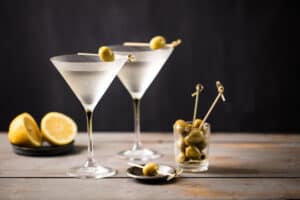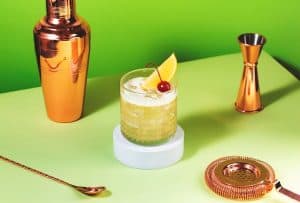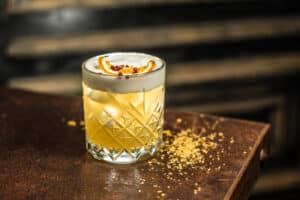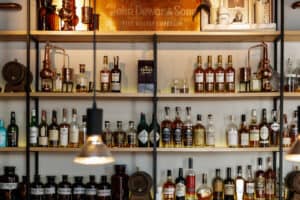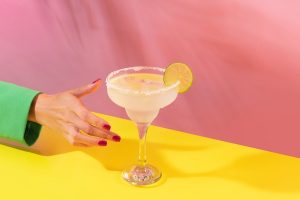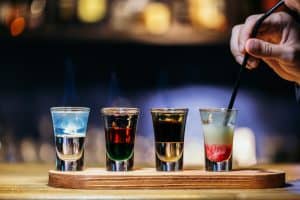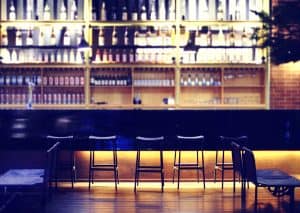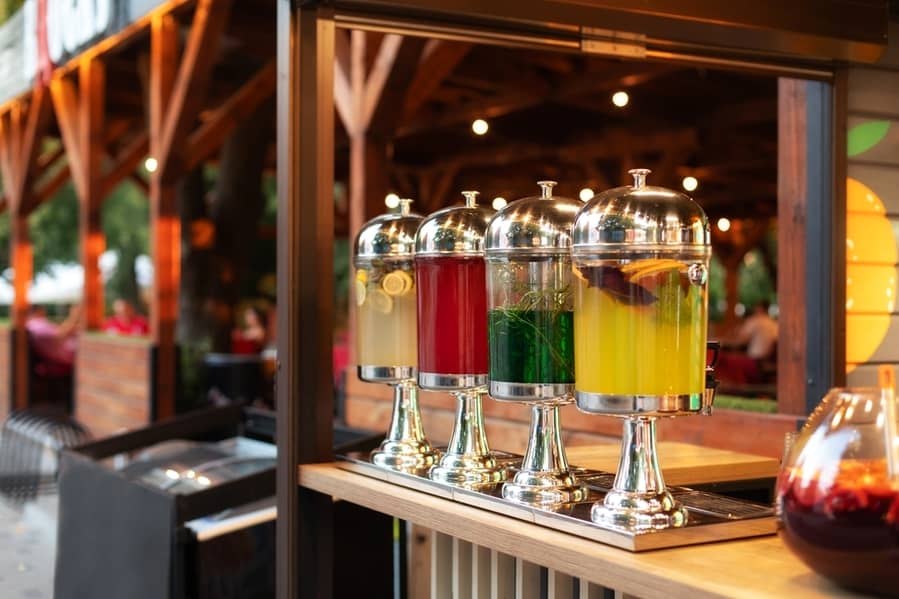
When someone mentions ‘on tap’ or ‘draft,’ our minds immediately swing towards a pint of beer with a nice head of foam on top. But this trend is changing, with some bars offering cocktails on tap.
While a cocktail on draft may sound strange, it is possible with a whole lot of benefits for both the customer and the bartender.
Serving cocktails on draft has benefits like saving time and reducing costs by eliminating over-pours. It allows non-bartending staff to serve cocktails and ensures consistent taste. However, adjusting recipes for consistent dilution and proper maintenance to prevent clogging and taste variations are important considerations.
We’ll examine draft cocktails, also known as cocktails on tap. But first, we’ll look at the benefits of the concept before investigating the downside.
Benefits of Draft Cocktails for Bars
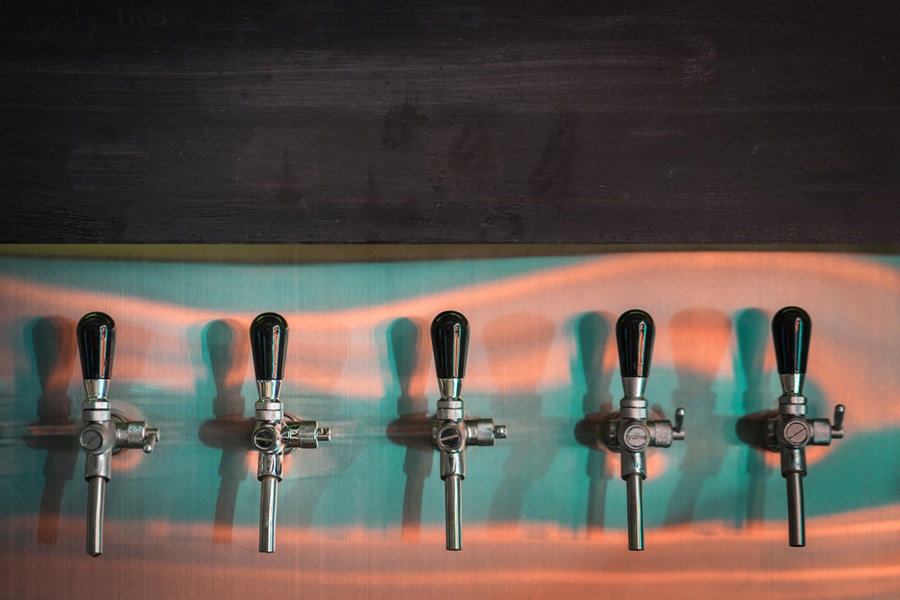
There are numerous benefits for bars to serve their most popular cocktails on tap, as we’ll examine below.
Exceeding Customer Perceptions
Any bartender can make a draft cocktail—whether or not they have special cocktail training. Customers want consistency when they order a cocktail. Today’s Margarita must still taste the same when they return to your bar in a few months, and draft cocktails guarantee this.
Additionally, you can allow curious or indecisive customers to taste a cocktail before they buy a cocktail. You’ll minimize the risk of them returning it because it was not what they expected.
Remember to factor sample costs into your batch pricing. Kegged cocktails are also easy to prepare for menu items like cocktail flights because it’s quick and easy to pour.
Speed and Consistency
Ask any bar manager what the key to a successful bar is, and they’ll probably mention speed and consistency. The quicker cocktails are mixed, and drinks are poured and served, the more money a bar makes. Simple math.
It boosts your bar’s reputation, drives business forward, and turns customers into loyal regulars. Cocktails on tap mean anyone can pour a cocktail, garnish it, and serve it quickly.
Having some of the most popular cocktails on the menu ready to go also helps to cut down on preparation time. It allows a bar to make more money.
Customers can also order a pitcher of a particular cocktail and share it at their table. Bartenders don’t have to try and balance the resulting large-batch cocktail because it is already done when they pour it from the tap.
It’s Shiny and New
Who doesn’t love something new and exciting? Cocktails on tap is a niche market with a surprise twist.
Instead of a beer from a faucet, a five-ingredient cocktail is drawn in less time than it takes to gather all the ingredients. It also offers bars a lucrative opportunity to stand out from their competitors.
Customers are always hunting for the next shiny thing, which provides a bar the chance to shine.
Carbonated Cocktails
Dovetailing with the novelty of a new approach to cocktails, you can also serve ‘still’ cocktails like the Negroni, Mojito, or Pimm’s Cup with a bit of fizz. Force-carbonating unique cocktails can be challenging to achieve, but with the pull of a handle, these woes can be a thing of the past.
Instead, carbonated cocktails can be a signature of your bar and draw more customers, equaling more profits. In addition, carbonated cocktails can give a whole new spin on classics such as a Negroni, Martini, or even Manhattan.
Social Media Presence
Draft cocktails also create the opportunity for a bar to invite social media influencers, food and drink bloggers and writers, and even the press to come and enjoy the revolutionary concept of cocktails on tap.
Hashtags, mentions, location and name tags, and shares on social media also help to raise awareness of a bar’s unique approach to serving cocktails on tap.
The Downside of Draft Cocktails

With every new and shiny innovation on the market, there come drawbacks.
Batching Cocktails Correctly
Multiplying the number of ingredients to make a large batch of cocktails isn’t as easy as just taking a recipe and upping all the ingredients for the number of drinks you’re expecting to end up with.
Even when you’re using ratios to create a cocktail, sometimes you’ll need to adjust the proportions up or down to arrive at a cocktail that tastes the same as the original. Unfortunately, you need a skilled bartender to create large batches of cocktails that are still nuanced and true to the original.
Pre-batching cocktails are also against the law in certain states, so ensure you follow the law.
Shaken Cocktails are Problematic
Unfortunately, cocktails that need to be aerated can be problematic because they need to be shaken. Therefore, stirred, spirit-forward cocktails are the best to put on tap.
Things That Go Clog in the Pipes
A draft system is already a demanding piece of equipment when installed and needs maintenance. In addition, particles and sediment from fruit juices, like citrus, can build up in the draft feed lines, leading to bacteria and mold growing in the pipes and, finally, clogs.
Bacterial or mold growth in your system’s pipes also poses a significant health risk to your staff and customers.
Ingredients such as egg whites, cream liqueurs, and dairy should not even come to mind when you install a draft cocktail system. They will clog your lines, grow bacteria, and pose a health risk. Likewise, forget about putting a Whiskey Sour on tap because your pipes will get clogged and won’t work.
Some bartenders shake their keg at the beginning of each shift to ensure that the cocktail hasn’t separated and that the juice ingredients aren’t settled at the bottom of the keg. This little bit of ‘maintenance’ is worthwhile because it saves you from mixing cocktails during rush hour and keeps them consistent.
Keep the Pipes Clean
Clog-free pipes are necessary, but you must also obsessively clean the feeder pipes and equipment. Coffee is one of the worst things you can put through a tap system. It stains the lines and taps, the taste is challenging to get rid of, and it can ‘tarnish’ whatever else you use after you’ve had coffee go through the lines.
Planning the Layout
Planning the layout of your bar is essential, and when you want to serve draft cocktails, this becomes crucial. If you’re serving room-temperature cocktails, you won’t have to fret too much about keeping the cocktails cold. Still, refrigeration becomes essential when you use a long draw system.
When the kegs are stored in a walk-in fridge away from the bar, the cocktail can warm up when it reaches the glass. Glycol- or air-cooled lines are necessary to keep cocktails at the right temperature.
These unique insulating and cooling systems require extra care and maintenance and can increase your cocktails’ prices. Direct draw keg systems do not need additional cooling if your kegs are placed in refrigerators directly connected to the taps.
Picking the Right Gas
Using the right equipment also means using suitable gas for your cocktails:
- Carbonated cocktails require CO2
- ‘Still’ cocktails will require 100% food-grade nitrogen, not what they use in laboratories. Nitrogen molecules are smaller than CO2 molecules, and drinks do not absorb them as easily.
Final Considerations
If you’ve been curious about serving cocktails on tap to boost your bar’s sales, this might just be the solution you’ve been hoping for. Draft cocktails are convenient and quick to pour; even junior staff can be trained to draw a cocktail that still tastes perfect.
In addition, bartenders don’t have to measure each ingredient before they pour a cocktail meticulously.
The equipment’s initial cost may deter bar owners from setting up a draft cocktail system. But, when you make a list of your most famous cocktails and notice they don’t require special techniques like shaking or smoking, draft cocktails might just be the answer.

